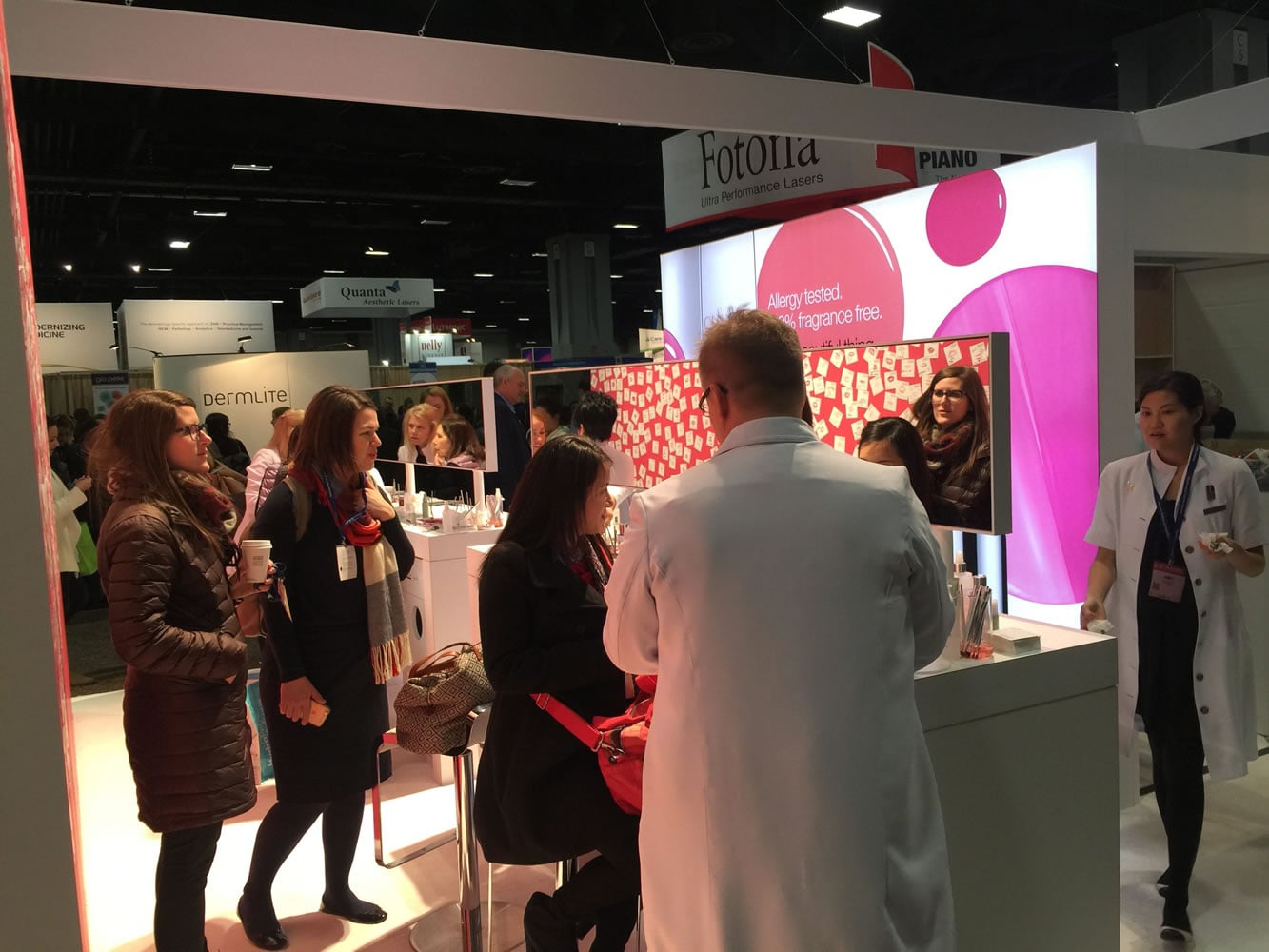The modern war against aging — against tiny furrows, laugh lines and muffin tops — will be bloodless.
Now, we’re microneedling, subjecting our jowls to the prick of a hundred pins in the hopes that this will prod our collagen to flow the way it did when we were 25. We’re basking in the clarifying glow of intense pulsed light and letting ultrasounds wash over our chubby parts. (Prominent exception to the bloodless rule: The “vampire face-lift,” the grotesque, Kardashian-endorsed fad that pumps your own platelets back into you: That is basically all blood.)
No longer will we be nipping, sucking and tucking at 60. Not when we middle-income, yoga-loving Americans could be filling, peeling and “sub-dermal heating” at 35.
For evidence, you needed only to troll the massive halls of the Walter E. Washington Convention Center in the nation’s capital earlier this month, where thousands of doctors converged for the American Academy of Dermatology’s annual conference. Doctors flitted between sessions on sculpting and needling and mingled with those who peddle the tools of this revolution: the erbium lasers, the Fraxel lasers, the stem-cell serums, the HydraFacial get-ups and the Dermapens.
“Twenty-five, 30 years ago, everybody thought of dermatology as psoriasis, eczema, acne and warts,” said Tina Alster, a high-profile Washington dermatologist who gave several lectures during the convention. These days, dermatology is as much the pursuit of a future free from having to age like our mothers.
So, inside the convention center’s exhibit hall, there was a National Institutes of Health table stocked with the requisite dermatological pamphlets — Raynaud’s Phenomenon! Behcet’s disease! — that no one stopped to pick up. But who could resist the allure of the cosmeceutical stands, where pretty women slathered conference-goers in post-laser gels and balms?
“What are cosmeceuticals about?” we wanted to know.
Cash, they whispered. Doctors sell the products in their offices to patients who’ve had procedures — procedures that doctors are now performing all the time. Which are also about cash.
According to data compiled by the American Society for Aesthetic Plastic Surgery, Americans spent more than $12 billion on cosmetic procedures in 2014, and some doctors estimate that half that figure is spent on the non-invasive stuff, including fillers and fat injections. And the number of men looking to flatten their crow’s feet with a little hyaluronic acid or tighten up their man-handles using radio frequencies rose at a rapid clip: Procedures among men rose 43 percent between 2013 and 2014.
Alster, one of the world’s leading experts on cosmetic lasers, has been in the field for decades, and she sees her clientele changing as fast as the technology.
“The younger age groups are much more accepting of this,” she said. “They don’t really see this as being abnormal. It’s like getting their hair cut.”
It’s the gray-hairs, the Dad Bods, who fret about the stigma of paying a visit to the doc and fear ending up looking plastic.
“The baby boomers and older age groups — who need it, right? — they’ve been the ones who’ve been the most reluctant to embrace these procedures,” said Alster. “There’s still that element of it being so vain. The younger people are like ‘Hey, I had Fraxel today.’ ”
In patients’ minds, “it goes hand-in-hand with eating kale and going to spin class,” confirmed Ivona Percec, associate director of cosmetic plastic surgery at the University of Pennsylvania, in a phone interview.
As with eating kale, of course, before you can feel good, you must first feel bad. In the convention center, it was almost impossible not to feel slightly bad — like the kind of bad where you have leprosy but don’t worry, because it’s gonna be okay — in the midst of all these peddlers of youth and beauty and true happiness.
This spate of new technology is more than the field has seen “at any point in cosmetic medicine,” said Percec, which has even opened a research center dubbed the Center for Human Appearance to study the trends.



